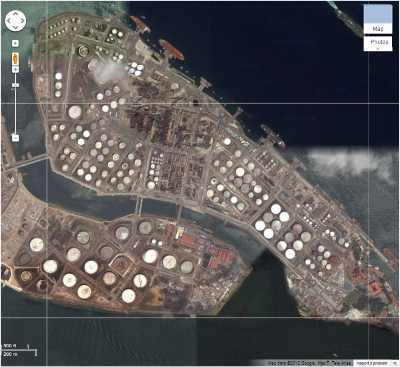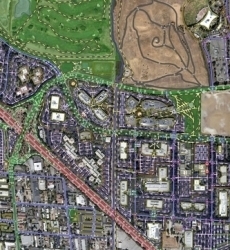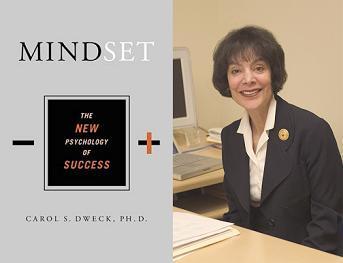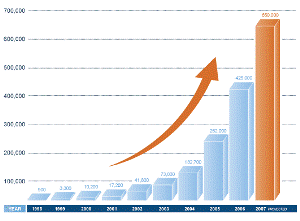Jeremie Averous's Blog, page 144
October 23, 2012
How the Fourth Revolution transforms our view of Earth
Working in the field of large, complex projects, I can’t see a project file nowadays without great pictures coming from Google Maps adorning the file: pictures of the site, of the present facilities…

Industrial Facility seen from Google Maps
And indeed it is so easy from any computer to have precise satellite pictures of any place on Earth that we just don’t think any more about the miracle that is… ten years ago only, this privilege was reserved to government authorities and large corporations who could pay to get the picture taken by an aircraft or a satellite.
And today in developed countries most roads in large cities are also visible through Google’s StreetView.
This unprecedented democratization of earth imagery has far reaching consequences. It changes fundamentally the concept of ‘public space’ (which can now be observed from anywhere on Earth) but also the concept of ‘private space’ (you can’t hide what you have in your garden from your neighbor any more!). It changes fundamentally how we perceive the physical space around us. This transformation is as strong as when we saw the blue planet Earth for the first time from space, floating in emptiness, in the 1960′s.
Some people argue that because only a limited number of actors manage this data (Google being the most prominent), we are exposed to possible manipulation of the data for commercial purposes, showing us only what they want to show us (see the paper “The Dark Side of Commercial Mapping”). We are not so pessimistic, because there will always be competitors and the crowd will denounce abusing behavior. But certainly our view of the geography that surrounds us has been transformed and this has already changed our decision making when it comes to property or project management.
Today, our perception of our immediate and distant geography has been transformed. Like our new vision of Earth transformed our mindset in the 1960′s, how will our action taking relative to geography, in particular in the field of ecology, change?

October 20, 2012
The best digital maps are created by humans and crowd-sourced
Following the outcry about the poor quality of the new Apple mapping application that came out with the iPhone 5, let’s investigate how the best electronic maps around have been created.
 No surprises, there’s a lot of human work, sweat and crowd-sourcing behind them. This excellent paper on “How Google Builds its Maps and What It Means for the Future of Everything” describes how an army of people (most of it probably in India) have reviewed all the grueling details of the Google map database, helped lately by Google Street View cars to achieve the appropriate accuracy.
No surprises, there’s a lot of human work, sweat and crowd-sourcing behind them. This excellent paper on “How Google Builds its Maps and What It Means for the Future of Everything” describes how an army of people (most of it probably in India) have reviewed all the grueling details of the Google map database, helped lately by Google Street View cars to achieve the appropriate accuracy.
But Google Maps also allow users to give their input to correct inaccuracies (even wondered at the small clickable “Report a Problem” at the bottom right that allows you to give input directly to Google?). So, a significant additional accuracy is given by crowd-sourcing.
Digital maps aggregate an incredible amount of geographical information on several layers, giving insights into our world in a way that had never been possible before – and thus changing our view of it. Even if Google maps was only created in 2005 (!), taking into account the effort that has gone into it, you can’t just improvise an alternate version. Catch-up of the current mapping data will take significant amount of effort. That effort will be done by competitors because this data is so strategic commercially, but only those will be successful that have significant capability to mobilize people to code the data – and to mobilize the crowd to ensure constant accuracy even in case of changes. Google has an advance over everybody else, and this huge investment they made will be one key to their future success.

October 18, 2012
Don’t wait to define precisely your Future Perfect to take action!
One of the most difficult tasks it seems is to define what your Purpose is. What is your goal in life, what is your vocation, what would your Future Perfect look like? It is difficult, and it is necessary if we want to drive our life towards what we dream of.

Still dreaming on your Future Perfect?
It is so overwhelmingly hard that most people just look at the task and declare it impossible. And it is indeed impossible – we’ll never know what our real vocation was before our last moment on Earth.
It seems a daunting task – to try to figure out where you passion really lies, what state you want to reach eventually. Don’t make it a quest in itself. It is perfectly alright – and perfectly normal – that your “Future Perfect” will evolve slowly over time and years, it will remain an objective you’ll never really reach, as you continuously grow and discover new perspectives on life.
It is certainly a tough introversion to figure out what your Future Perfect would look like at a given moment, but don’t exaggerate the importance of it. What’s key here is to get a direction to go to – at the present moment.
So, don’t agonize on trying to figure out your Future Perfect. Have a general understanding of what resonates emotionally with you, and just move towards that direction. You’ll discover new landscapes, and possibly further even more your goals. That’s alright.
When do you start to take action to move towards your future perfect? Don’t waste a minute and just move! And of course, enjoy the journey!
Image by Marc Adamus. Many more great nature photos on Marc Adamus website.

October 16, 2012
Building a Ghost Town to Test New Technologies – Another Ghost from the Industrial Age?
A town is being built in New Mexico to test all sorts of new technologies that will apply in towns and cities. At a cost of several hundred million US$, the plan is to create a replica of an actual 30,000 people town that can be used as a laboratory. A detailed explanation of this incredible project is to be found in this Fast Company article on “America’s Most Innovative Neighborhood: 15 Square Miles In New Mexico, Population: 0″.

Mayor presenting the CITE ghost town
When looking at this project one can but wonder whether that’s not a relic of the past Industrial Age research approach. The place is in the middle of nowhere (so remote that atomic laboratories and disposal sites are nearby – I’ve been to Carlsbad, NM) – do some people fear an explosion? Why on earth put a research center so far away from anything?
The investment is huge to test what – technologies that would be deployed in cities? Why would you want to spend so much money when small scale tests could be deployed in actual cities – of course in less controlled but so much more realistic settings. And Google cars without drivers are already oozing on California’s highways, so what’s the point of building a special town to test them?
It looks like it is a ghost from the Industrial Age past where research had to be done in huge concentrated laboratory – where research was to be produced like in a factory. What will this town laboratory bring to the world? History will tell if it sees the light. In view of where actual innovation happens in the Collaborative Age it is dubious it would happen in such a remote place.

October 13, 2012
Can a national “growth mindset” make the difference?
In a previous post we explained Carol Dweck’s approach to “fixed” versus “growth” mindset. Carol Dweck’s considerations are at the personal level. But what about the national or collective mindset?
The Industrial Age mindset is very much a “fixed mindset”. This was clearly shown by the myth of the ‘fixed IQ’ (your intelligence is innate, you can’t change it); the Freudian approach of seeking what could have happened in your past that determines what you are today… and many institutions in several countries where one’s professional fate is essentially determined by one’s academic prowess.

Wen Jiabao (China’s Premier) having fun wearing the Polytechnique hat during a visit to the French elite school
Still there were cultural differences in these instances, that originated from a distant cultural past. Some countries like France or China are very much “fixed mindset” – you intelligence is a given and expressed by the school you visited (and entered through a competitive examination); and that essentially determines your career and social status. Even when you are 50 or 60 years old people ask for your school studies to determine your social ranking! Other cultures like the British or the American appear to be much more of a “growth mindset” and it is usual to consider the present qualities, abilities and skills of people and not so much what they studied 20 years ago (albeit with some limitations in the upper ranks of society though).
As we step into the Collaborative Age we understand the tremendous damage that a “fixed mindset” can have on individuals and also on entire societies.
The solution to the crisis of the Western World, and to the transition in the Collaborative Age, is to adopt a “growth mindset”. Through learning, development and experiment can we all as a society reach a higher condition. Let’s switch our collective mindset to a clear, unequivocal “growth mindset”!

October 11, 2012
Escape from the ‘Talent’ illusion: do you have a “fixed” or a “growth” mindset?
I read a great book lately: “Mindset” by Carol Dweck. She is a renowned researcher in the field of motivation. She explains that there is a significant difference between achievers and others: it all depends whether you have a “fixed mindset” or a “growth mindset”.

Carol Dweck
“Fixed mindset” people consider that talent is innate and you can’t just change it. They tend to avoid any situation of failure and consider that their talent is limited by their endowment at birth. “Growth mindset” people on the contrary consider that intelligence and talent develop through hard work and that difficulties are challenges are just obstacles that need to be overcome.
This seems quite straightforward but the book is backed up by decades or research and stunning experiments about the consequence of one’s mindset. And people seem to have generally one or the other.
If you want to know if you have a growth or fixed mindset? Just take the simple mindset test on the book’s website.
Did you test positive to the “fixed mindset”? Read on, a new life will start for you soon! The great thing is, you can change your mindset from “fixed” to “growth”. Even short term! And also on the longer term with some practice. And that’s what happened to the author, by the way. All it takes is the realization – the mindset – that talent is not innate but the result of great work.
Still hesitant? Observe around you how the really talented people are the result of years or decades of work. Grow and learn. And you can also change the world!
Here’s again the link to the book on Amazon.com: ”Mindset” by Carol Dweck.

October 9, 2012
Leadership is about Dealing with Conflict
As a follow-up of our post on Openness Alone Cannot Drive Change and the fantastic video by Margaret Heffernan, let’s reflect a bit about what this means for the leader in the Fourth Revolution context.

Not the leader we need!
Indeed, as Margaret Heffernan explains, leadership is dealing with Conflict. Dealing with the information that is available and contradicts our usual vision of the world, or requires us to review our world-view.
It is so amazing to see all the time those situations where people don’t stand up to situations. Because that is hard and risky.
It is difficult to give feedback to someone who is creating anxiousness by their behavior, or who just plainly behaves in a way that is negative for himself and his environment. It entails creating a bit of conflict for the sake of resolving a much larger issue.
Wouldn’t the right definition of leadership be: being able to stand up, be assertive and courageous to address conflict in a constructive way - or create the right amount of conflict at the right time ?
Not just addressing conflict in a destructive manner, but recognizing tensions and addressing them in a way that creates value. Addressing them in a way that cares and brings us to a better world.
Are you ready to look into the face of Conflict and lead us?

October 6, 2012
Social Product Creation: Quirky, The Collaborative Invention Unleashed!
Take 6mins and watch this video of the Quirky manifesto – one of the most enlightening videos on the Fourth Revolution’s process and possibilities:
Quirky Manifesto from Quirky on Vimeo.
Quirky is a successful startup that thrives on social invention. Inventions are sorted out by the crowd, and if selected, inventors get royalties… and not just inventors: those that were influential in the later development of the idea, the name, the tagline or the color too!!
The development of this startup is astounding. Launched in 2009 it now launches 2 new products per week.. and they have paid millions to inventors and contributors. More information on this post by Mitch Joel.
Quirky now gets full attention: Quirky just raised $68 million and the attention of highly influential venture capitalists.
Think about it: a startup which is collecting ideas from anybody, put them to proof and vote, builds them, compensates all the crowd that was influential in producing the product… and unleashes the inventiveness of the world.
The Fourth Revolution has not finished to astonish us!

October 4, 2012
The Exponential and the Black Swan: The Counter-Intuitive World of the Fourth Revolution
Following our posts on the Fourth Revolution being the realm of the exponential, this nice blog by Paul Graham (a famous Venture Capitalist investor), “Black Swan Farming”, brings closer the related issue of the fact that today, success is extremely rare – and extremely successful. And that as much as the exponential is not intuitive to us, this situation also escapes our common sense. It makes it in particular difficult to take action and put our stakes on the right candidates.
 In the case of startups this expresses itself by the fact that only a very, very, very small handful of startups will make it really, really, really big (1,000x the initial investment or more); and they dwarf almost every other investment – they dwarf hundreds of other investments which either outright fail, or just live on with a nice but limited growth.
In the case of startups this expresses itself by the fact that only a very, very, very small handful of startups will make it really, really, really big (1,000x the initial investment or more); and they dwarf almost every other investment – they dwarf hundreds of other investments which either outright fail, or just live on with a nice but limited growth.
This is difficult enough to apprehend; where to invest in is equally counter-intuitive: it is mainly in ideas that seem at first view utterly pointless, and that are not popular.
The important idea in this blog is the fact that the situation is so counter-intuitive that we would need in fact to suspend all kind of intuition about whether a startup could be successful to increase our chances of final success – by taking more risk and capturing more of these freak Black Swans.
We already live in a world which is counter-intuitive through exponential and freak events – we absolutely need to change our frames of mind to thrive in the Fourth Revolution. What are you doing to change from the linear vision of the Industrial Age?

October 2, 2012
How to Overcome FLAT: the Exponential Curve Startup Problem
As we argue that the Fourth Revolution is the age of the Exponential, we also face daily a singular problem: the start of an exponential curve, as seen closely, is… FLAT! Whereas it can bring to great heights in a small number of cycles, the beginning can be very disappointing.

Don’t you find that the beginning of the growth chart looks… flat?
And here lies the big struggle of all startups and all human projects. The beginning is flat. Almost always.
But… is it FLAT like DEAD – nothing will never happen and it will remain indefinitely zero, or is it FLAT like the beginning of an exponential that could bring the project to unknown heights?
It turns out that this is a very difficult problem and a lot of writing has been produced on what boils down to this problem. How can we know what kind of FLAT we are facing? When should we call it off, deciding it will never take off? When do we need to be persistent even if the results are poor at present?
Luckily the exponential startup FLAT is never completely FLAT: it is possible to use a microscope and detect some movement. If it shows a definite positive trend then, even if it’s much lower than what you were looking for at the moment, keep the effort, an exponential is possibly being created. If the results vary but look more like an inconsistent random pattern, kill it.
Change the scale of your observation. An exponential will remain an exponential even if very tiny. And you will see if it’s the right kind of FLAT.
Unfortunately, a lot of people kill their project because the result is not satisfactory without checking the actual trend.
What’s the trend on your latest project?




